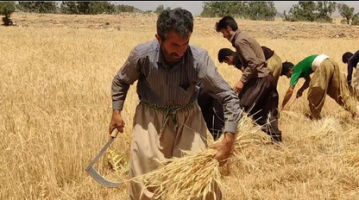I do not see any problem with herders on horses engaging in agriculture. All they needed to do was to spread the seeds.
I agree with you. I think that the pastoral/nomadic aspect of some of the cultures relevant to the whole topic is overstated and given a lot more weight than is due. It seems to be forgotten that Neolithic pioneers kept livestock together alongside growing crops. It's been
found that neolithic farmers used a strategy of diversification when settling in new areas. It is thought that they would bring a wide range of seeds with them, but that they relied on livestock as security until it was established which type of crops were most suited in new environments.
It makes sense that as farmers expanded farther north and east into the steppes, reliance on livestock would gradually increase, but crop production was never completely abandoned by the cultures in question. The broadly general picture of the zone spanning from the area of Moldova in the west to the Caspian drainage basin in the east seems to be a gradient of very large communities in the west greatly reliant on cultivation, but with livestock also forming an important part of the economy, to the gradually decreasing size of such centers, and increasing distance between them as one proceeds eastward, with stock breeding gradually increasing in importance. But as a rule of thumb, heavily pastoral communities would be very sparse in population over extremely wide areas.
To draw a quote from a generic book on the topic by JP Mallory: "Even in such areas as the Dnieper, Ukrainian archaeologists argue that such sites as Mikhaylovka may have served as centers on which camp sites of semi-nomadic pastoralists depended. The general picture of the Yamnaya economy is varied and dependent on the natural conditions in which its populations found themselves. In the major river valleys, where agricultural soils and forested environment provided the necessary basis for mixed farming settlements, the Yamnaya culture appears to have followed such an economy. Nevertheless, the increased development of stock breeding, especially the utilization of both the sheep and domestic horse, assisted in the expansion of human settlement out from the river valleys into the deep steppe."
Apparently there may be something of a bias in describing these cultures since most of the known archaeological sites are burials, and settlements are much more scarcely to be found. But significantly, among the ceramics, copper knives, and scrapers typically found among grave goods, characteristic tools also included flint sickle blades and harpoons. Sickle blades seem pretty indicative of crop cultivation, and their inclusion among grave goods ought to attest to the importance of that economic activity. And harpoons as potentially a fishing implement ought to caution anyone against pigeonholing these cultures into only a single economic activity.
So in broad terms, it seems to me that a picture of established agriculture communities that served as economic centers for wide hinterlands sparsely populated with pastoral herders might be more of an apt model to describe these cultures, than
only characterizing them as horse riding herders ranging back and forth across the grasslands without any greater economic focus.








